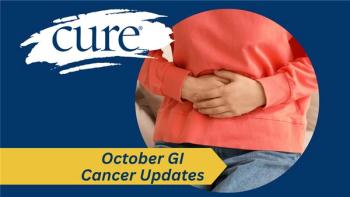
Immunotherapy Combination Shows Benefit in Phase 2 Advanced Melanoma Trial
Key Takeaways
- Yervoy and Opdivo combination improved OS by 42% over Yervoy alone in advanced melanoma patients.
- Two-year OS rates were 69% for the combination versus 53% for Yervoy in BRAF wild-type melanoma.
The combination of Yervoy and Opdivo showed a 42 percent improvement in overall survival compared with Yervoy monotherapy for patients with advanced melanoma in a two-year assessment of the phase 2 CheckMate-069 trial.
The combination of Yervoy (ipilimumab) and Opdivo (nivolumab) showed a 42 percent improvement in overall survival (OS) compared with Yervoy monotherapy for patients with advanced melanoma in a two-year assessment of the phase 2 CheckMate-069 trial. Michael Postow announced these results at the 2016 American Association for Cancer Research (AACR) Annual Meeting.1
The results extend the enthusiasm for combination immunotherapy owing to complementary and non-redundant mechanisms of action between anti-CTLA-4 Yervoy and anti-PD-1 therapy Opdivo, said Postow from the Melanoma-Sarcoma Oncology Service at Memorial Sloan Kettering Cancer Center.
The two-year OS rate with the combination was 69 percent compared with 53 percent for Yervoy alone, for patients with BRAF wild-type melanoma. The median OS among patients was not been reached with the combination regimen and was 24.8 months with Yervoy monotherapy.
In the overall study population, the two-year OS rate was 64 percent with the combination compared with 54 percent for Yervoy alone. The median OS at two years in patients randomized to either the combination or monotherapy has not been reached.
Findings from the CheckMate-069 study add to results from the phase 3 CheckMate-067 study, which showed improvements in progression-free survival (PFS) and objective response rates (ORR). The FDA granted an accelerated approval to the combination for BRAF wild-type tumors in October 2015 and for those with BRAF mutations in January 2016.
In the phase 2 study, treatment-naïve patients (142 patients) with unresectable stage 3 or metastatic stage 4 melanoma were randomized in a two-to-one ratio to either 3 mg/kg of Yervoy in combination with 1 mg/kg of Opdivo (95 patients) or placebo (47 patients) once every three weeks for four doses. This was followed by Opdivo at the same dose or placebo every two weeks until disease progression or unacceptable toxicity.
Randomization was stratified by BRAF status, with the primary endpoint being ORR among patients with BRAF wild type tumors. OS was an exploratory endpoint and was intended to be descriptive. The current analysis reflects an OS analysis from a database lock occurring in February 2016, representing a minimum follow-up of twp years.
Eighty-one percent of patients in the combination arm and 89 percent in the Yervoy monotherapy arm had American Joint Committee on Cancer stage 4 disease, and about half the patients in each arm had M1c melanoma. Lactate dehydrogenase (LDH) levels were above the upper limit of normal in about 25 percent in each arm. PD-L1 expression was at least 5 percent in about one fourth in each arm, and 21 percent to 24 percent were BRAF V600 mutation-positive.As reported previously, with 11 months of follow-up, the ORR in the BRAF wild-type group (the primary endpoint) was 61 percent in the combination arm compared with 11 percent in the Yervoy monotherapy arm.2 The results were similar among all randomized patients, which included patients with BRAF-mutant melanoma.
With two-year follow-up, among all patients randomized to combination treatment, the median tumor burden by RECIST v1.1 decreased by 70 percent, whereas the median tumor burden among all patients randomized to Yervoy increased by a median of 5 percent. The median duration of response was not reached in either arm. Eighty percent of responses to the combination (45 of 56) and Yervoy monotherapy (four of five) were ongoing at the two-year follow-up.
“The majority of these responses happened early, at the time of the first scan,” said Postow. “The median time to response was 2.8 months in the combination arm and 2.7 months for [Yervoy] alone.” Twenty-nine of 45 patients (64 percent) who discontinued combination treatment remain in response.
Median PFS at two years in the BRAF wild-type population was not reached in the combination arm and was 4.4 months in patients randomized to Yervoy alone. “This reflects a statistically significant difference in the reduction of progression or death in favor of the combination over [Yervoy] monotherapy,” he said.
The two-year PFS rate with combination treatment in BRAF wild-type tumors was 54 percent compared with 11 percent with Yervoy alone. Similar PFS rates were observed in the all-randomized population. The combination of Yervoy and Opdivo resulted in a median PFS that still has not been reached at the two-year follow-up. With Yervoy monotherapy, the median PFS was three months. “This reflects a 64 percent reduction in the hazard of progression or death in this all-randomized patient population, which is very impressive and statistically significant,” Postow said.
Overall, 35 percent of patients in the combination arm and 70 percent in the monotherapy arm received any subsequent therapy. Altogether 64 percent of patients randomized to Yervoy crossed over to receive any systemic therapy at the time of progression. Eighteen percent of patients in the combination group received subsequent anti-PD-1 therapy at progression, compared with 62 percent in the Yervoy monotherapy arm. The median time to initiation of the subsequent therapy was not reached in the combination arm and was 6.1 months in the Yervoy alone arm.
When assessing efficacy of combination immunotherapy by PD-L1 status, there was no difference in the ORR at the one-month data cut, and no difference in PFS or OS at two years between patients who were defined as PD-L1-positive versus those defined as PD-L1-negative.
Treatment-related adverse events were consistent with the initial reports, with higher rates of gastrointestinal and hepatic adverse events of any grade with the combination compared with monotherapy.
Grade 3/4 treatment-related AEs occurred in 54 percent of patients treated with the combination regimen versus 20 percent with Yervoy alone. AEs led to discontinuation in 37 percent of patients treated with the combination regimen compared with 9 percent for Yervoy alone.
Further information on survival outcomes with Opdivo plus Yervoy are expected from the larger randomized phase 3 CheckMate-067 trial, said Postow. Initial findings from this study were reported at the 2015 American Society for Clinical Oncology Annual Meeting.
References
- Postow MA, Chesney J, Pavlick AC, et al Initial report of overall survival rates from a randomized phase II trial evaluating the combination of nivolumab (NIVO) and ipilimumab (IPI) in patients with advanced melanoma (MEL). Presented at: AACR 2016, New Orleans; April 16-20, 201. Abstract CT002.
- Postow MA, Chesney J, Pavlick AC, et al. Nivolumab and ipilimumab versus ipilimumab in untreated melanoma. N Engl J Med 2015;372




